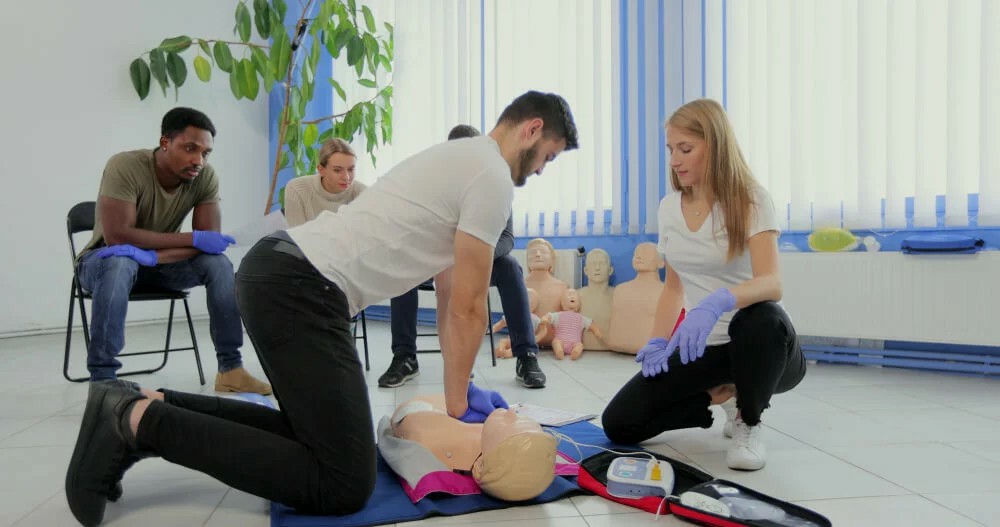Empowering Your Workplace: The Essential Guide to First Aid and CPR Training
When it comes to workplace safety, preparation is key. One of the most effective ways to ensure a safe working environment is to invest in First Aid and CPR training for employees. This comprehensive approach not only equips your team with necessary emergency medical response skills but also helps organizations meet health regulations and enhance overall workplace safety.
The Importance of First Aid & CPR Training in the Workplace
In any workplace, the possibility of medical emergencies exists. Whether it's a minor injury, such as a cut or bruise, or a more serious situation requiring immediate attention, knowing how to respond effectively can mean the difference between life and death. By providing First Aid training and obtaining First Aid Certification, businesses can ensure that their employees are prepared to act swiftly and confidently in emergencies.
Key Benefits of First Aid Certification for Employers and Employees
- Enhanced Safety Culture: Employees trained in first aid and CPR foster a safer workplace. Their preparedness contributes to a culture of safety, reducing overall injury rates.
- Improved Emergency Response: Properly trained staff can provide immediate assistance during emergencies, stabilizing victims and potentially saving lives before emergency services arrive.
- Compliance with Regulations: Many industries are required to adhere to health and safety regulations that mandate specific First Aid training for employees. Ensuring compliance protects your organization from legal repercussions.
- Increased Employee Confidence: Employees who complete a First Aid Course feel more empowered and capable when faced with emergencies. This confidence can lead to quicker, more effective responses.
- Cost Savings: Investing in first aid training can minimize the severity of injuries and their associated costs, leading to lower worker's compensation claims and insurance premiums.
Vital CPR Skills: Techniques Every Workplace Needs
This Emergency First Aid Training not only covers basic first aid skills but also includes vital CPR techniques that every employee should know:
- Recognizing Cardiac Arrest: Understanding the signs and symptoms is crucial for a timely response.
- Effective Chest Compressions: Participants should learn the correct technique for performing high-quality chest compressions to maintain blood flow in emergencies.
- Using an AED: Training includes how to operate an Automated External Defibrillator (AED) to restore a normal heart rhythm.
Meeting Workplace Health and Safety Regulations through First Aid Compliance
Health and safety regulations often require organizations to implement safety protocols, including Emergency Medical Response training. By fulfilling these requirements, businesses not only protect their employees but also avoid potential fines and legal issues. Regularly updating and renewing First Aid Certification is essential in maintaining compliance.
Practical Emergency First Aid Procedures for Immediate Response
When emergency situations arise, having a clear understanding of appropriate procedures is vital. Here's a step-by-step guide:
- Assess the Scene: Ensure the environment is safe for yourself and the casualty before providing assistance.
- Call for Help: Alert professional emergency services immediately.
- Provide Care: Depending on the situation, administer first aid or CPR as required, remaining calm and following trained procedures.
- Monitor the Victim: Keep an eye on the person’s vital signs and stay with them until professional help arrives.
How to Select the Best First Aid Training for Your Team
Choosing the right First Aid Course is crucial for effective training. Consider the following factors:
- Reputation: Look for accredited organizations with positive reviews.
- Course Content: Ensure the curriculum covers both first aid and CPR techniques.
- Training Delivery: Assess whether to opt for online or in-person training based on your team's needs.
Online vs. In-Person First Aid Training: Pros and Cons
While both training methods offer unique advantages, it’s essential to choose one that aligns with your team’s learning style:
- Online First Aid Courses: Flexible scheduling, self-paced learning, and the ability to revisit materials.
- In-Person Training: Hands-on experience, immediate feedback, and the opportunity to practice skills in a controlled environment.
Conclusion & Call to Action
Investing in First Aid and CPR training is a critical step for enhancing workplace safety and compliance. Empower your employees with the skills they need to manage emergencies effectively while fostering a culture of health and safety. Enroll in a certified First Aid Course today and equip your team for any situation.
For more information, feel free to reach us at [email protected].



 349,500 Offered Certificates
349,500 Offered Certificates
 24/7 Online Training
24/7 Online Training
 Money Back Guarantee
Money Back Guarantee
 Fully Accredited Courses
Fully Accredited Courses
